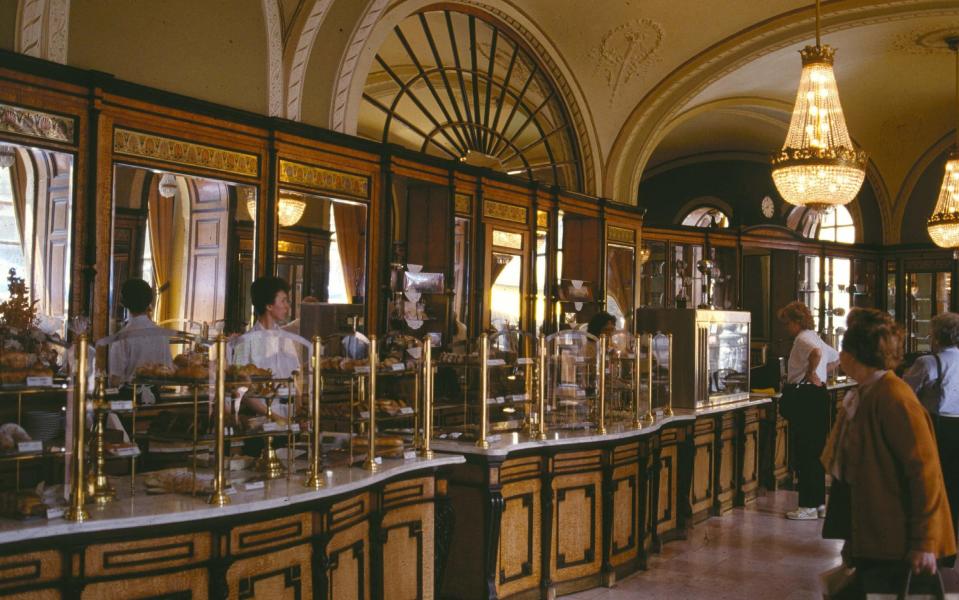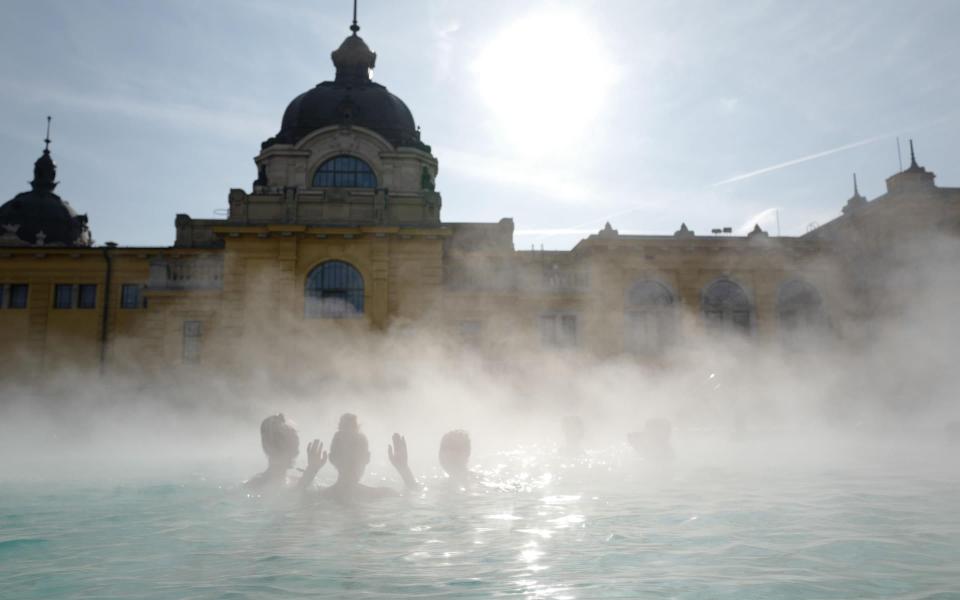Museums, hot springs, cakes – and a mummified hand: How to have the perfect Sunday in Budapest

Budapest is a city well set for Sunday mornings. For a start, most places are open, which wouldn’t be true everywhere in the world. Things have moved a long way since the fall of the Iron Curtain, and this is now a cosmopolitan capital with a sophisticated service industry that recognises the value of catering to weekend visitors.
Museums and galleries close on Mondays rather than Sundays, so you’re assured a dose of culture should you want it. Cafés and hotels offer Sunday brunches that hit the mark, and there are frequently festival events in the city squares, from performances of traditional music to celebrations of local products like sausages or wine.
But, more than that, Budapest simply has a shape and character suited to that Sunday morning mood. Few sights require an effort to reach them, and the journeys in between are pleasures in themselves, whether you’re crossing the magnificent Chain Bridge, passing street performers on Vaci Street or strolling up grand Andrassy Avenue for some boating in City Park. Joggers will find green spaces aplenty, while thermal baths promise a more laid-back introduction to the day. However you like your Sunday morning – early or late, active or lazy – there’s something here for you.
Naughty but nice
Hungarians have a notoriously sweet tooth, a hangover from the days of the Austro-Hungarian Empire when patissiers in Budapest and Vienna conjured many of the classic cakes and pastries that remain on the menus today. The most famous is the dobos cake, a belt-busting creation by master chef Jozsef Dobos in 1885 that features five layers of white sponge filled with chocolate cream and topped with caramel.
A good place to wrap yourself around a slice is Gerbeaud (Vorosmarty ter; 0036 1 429 9000; gerbeaud.hu; open 9am-9pm), the grand dame of the city’s cafés with an interior of pink marble that dates to the early 1900s. Alternatively, try the nearby Szamos Café (Kossuth Lajos ter 10; 0036 1 269 0216; szamos.hu; open 9am-7pm), one in a family chain of patisseries that is particularly known for its marzipan. This branch has a fascinating chocolate museum upstairs, too.

Now walk it off
There’s no shortage of lovely walks, each with its own distinct character. If you’ve the appetite for an early rise, Sunday morning is a good time to beat the bulk of the sightseers to the Castle District, and enjoy the medieval flavour of its cobbled streets and pastel-coloured burghers’ houses. Built high above the Danube, the fortified walls offer some of the city’s best views; the funicular railway runs from 7.30am. For more flurry and colour, take in the city centre (Belvaros) as its shops, cafés and street performers warm up, perhaps strolling the pedestrian artery of Váci Street from the Great Market Hall to the imposing Vorosmarty Square.
Alternatively, follow an arrow-straight route along Andrassy Avenue. This broad, elegant street was modelled on the Champs-Élysées, and it includes the magnificent State Opera House and the House of Terror (notorious former headquarters of the secret police) among the sights along its two-mile journey out to Heroes’ Square and City Park.
A warming wallow
Budapest sits on hot springs that feed dozens of bathing complexes around the city. The Romans first bathed here, and several baths survive from the period of Ottoman rule in the 16th century. For locals, a good old soak is a chance not only to relax but to catch up on the gossip, and the springs contain minerals said to alleviate certain medical conditions. Some complexes even offer the water to drink (although it won’t win any prizes for taste).
Gellert Baths (Kelenheyi ut 4; 0036 1 466 6166; gellertbath.hu; open 6am-8pm) are the best known, popular as much for their opulent art-nouveau styling as the bathing experience itself. The huge Szechenyi Baths (Allatkerti korut 11; 0036 1 363 3210; szechenyifurdo.hu; open 6am-10pm) have 16 indoor pools and an al fresco pool that is used come sun or snow, while purists like to lie beneath the Turkish cupola of the atmospheric Kiraly Baths (Fo utca 82; 0036 1 201 4392; en.kiralyfurdo.hu; open 9am-9pm), which were built in 1565.

Take to the hills
Few capitals have nature so close to hand. The walking and biking trails of the Buda Hills are ideal for blowing away the cobwebs on a Sunday morning, while two narrow-gauge railway lines offer characterful passage through the woods. Take a tram from Szell Kalman Square to reach the click-clacking Cogwheel Railway (Szilagyi Erzsebet fasor 14; trains every 20 minutes), which will take you as far as Szechenyi Hill and its viewing tower. Nearby is the famous Children’s Railway (Hegyhat ut; trains every 45-60 minutes), which was set up by the communist youth movement in 1948 as a way of providing experience to the rail workers of the future, and is still staffed by youngsters.
Pretty as a picture
The Hungarian National Gallery (Szent Gyorgy ter 2; 0036 1 201 9082; mng.hu; open 10am-6pm) – housed across several wings of Buda Castle Palace – has enough to fill several months’ worth of Sunday mornings, with exhibitions of Hungarian art ranging from medieval stonework to contemporary painting. Don’t miss the vast, visionary canvases of the early 20th-century artist Tivadar Csontvary Kosztka, whose work drew the admiring attention of Picasso. You will find one of central Europe’s leading collections of international art at the Museum of Fine Arts (Dozsa Gyorgy ut 41; 0036 1 469 7100; szepmuveszeti.hu; open 10am-5.30pm), with its Old Picture Gallery containing masterpieces by Raphael, Titian, Brueghel and many others.
Something spiritual
St Stephen’s Basilica (Szent Istvan ter; 0036 1 403 5370; basilica.hu; Sunday mass 8.30am, 10am in Latin, noon, 5pm in English, 6pm) can hold 8,500 people beneath its dome and bell towers. The dome – like Parliament’s – is precisely 96 metres tall in symbolic recognition of the year that Hungary was founded (AD 896). In a side chapel, the mummified right hand of St Stephen, Hungary’s first king, is displayed in a gold casket. Elsewhere, the tree-lined paths of Kerepesi Cemetery (Fiumei ut 16; open 7am-7pm) offer a contemplative meander around the graves of key players in the country’s history, from politicians to heroes of the 1956 Revolution.
Overseas holidays are currently subject to restrictions.

